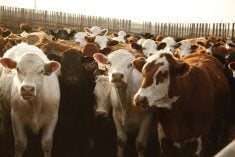The romance of a buggy ride in the moonlight would fall flat if not for a small group of artisans who keep the wheels turning.
Wheelwrights, who assemble the wooden spoked wheels for buggies, carts and horse-drawn wagons, are carrying on an old tradition driven partly by a renewed interest in driving horses.
One of the masters of the trade is 79-year-old Jack Shepherd of Maple Creek, Sask., who says, “don’t call yourself a wheelwright until you have done 100 wheels.”
Shepherd took a wheelwright’s course at the Western Development Museum in Saskatoon in1977 after he grew bored during his retirement. He opened his own shop in Maple Creek in 1980 and eventually became an instructor at the museum.
Read Also

Growth plates are instrumental in shaping a horse’s life
Young horse training plans and workloads must match their skeletal development. Failing to plan around growth plates can create lifelong physical problems.
The old knowledge surrounding wheel making rests with a small circle of people who are willing to share their skills and experiences during the museum’s course.
“The students are all kinds of handy people,” said Shepherd, who has eased himself out of the instructor’s role.
“There are a few pointers to make it easier.”
More than 280 people have taken the course since it started.
The Western Canadian Wheelwrights’ Association was formed in1992 with 18 members. There are now 130 members.
Spoked wheels likely appeared around 2000 B.C. when they were used on chariots in Egypt and Syria. The basics of making a wheel haven’t changed through the ages and many modern wheelwrights combine old skills with modern manufacturing techniques.
Much of their work today is spent restoring antique wagons and buggies, as well as some new construction projects. Finding parts can be a scavenger hunt. Wheelwrights haunt farm auctions, estate sales and nuisance grounds in their relentless search for hubs, rims and axles.
Cast-off parts must be scrutinized and checked for fit because there were no standard sizes for wheels, axles and hubs a century ago.
One standard does hold true. Wheels are set 1.4 metres apart on a carriage or wagon because that was the back width of two horses.
The lack of standardization in parts was the result of 39 major carriage manufacturers in Canada, which produced numerous models of horse drawn carts during the 19th and early 20th centuries. Most went out of business in the mid 1920s when the Model T Ford replaced the horse.
Many parts cannibalized from old wagons and buggies are not in the best shape. Made of white oak, hickory or other hardwood, many are showing their age.
“The main thing is to keep them out of the weather,” Shepherd said.
For more information, visit www.wcwa.ca.















